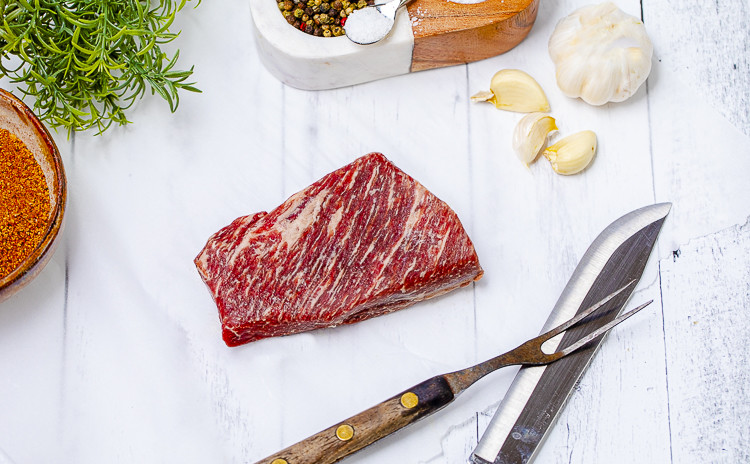Why is Wagyu Expensive?
posted on
February 21, 2019
Highest Quality Ration
- We provide our cattle with a high-functioning probiotic to aid in the digestion and absorption of their essential vitamins, minerals, and nutrients. We use the probiotic (instead of ionophores) to promote microbial fermentation in the digestive process.
- We also provide the cattle with Redmond Salt which doubles as a mineral supplement. This is a very high quality salt that provides many minerals that other producers do not provide.
- Of course, the cattle are ALWAYS fed 100% Non-GMO feeds
Wagyu take longer to finish
Wagyu genetics are different from commercial beef cattle in many ways. Specifically, Wagyu were bred over generations to develop the best marbling possible, no matter how long it takes. Wagyu beef in Japan is so well marbled and such a delicacy that Japanese ranchers received overwhelming compensation for their beef, negating the fact that it took a long time for the quality of beef to develop. Likewise, the Wagyu we raise are bred to have great marbling, but take longer to get to there. This adds cost for us in raising the animals, which must be reflected in our product for us to keep the farm running.
Superior Health Benefits
Wagyu is uniquely healthy. The ratio of monounsaturated to saturated fat in this meat is higher than in other varieties, so it's better for you while offering a better flavor. Beef from Wagyu offers high concentrations of essential fatty acids, Oleic Acid, and has a higher percentage of good cholesterol to bad cholesterol when compared to other types of beef.
- 9 Oleic Acid Uses + Benefits
Reduces Blood Pressure
Lowers Cholesterol
Promotes Fat Burning
Helps Prevent Type 2 Diabetes
Promotes Brain Function
May Help Prevent Ulcerative Colitis
Fights Infections
Promotes Skin Repair
Helps Fight Cancer
The practices we use promote health and allow our cattle to thrive, but this comes at a cost. We pay a premium so that we can ensure the best performance of our cattle. In turn, the cost of our beef comes at a premium so that you can ensure the best performance for you and your family!
Invest in your health today: Shop Now




